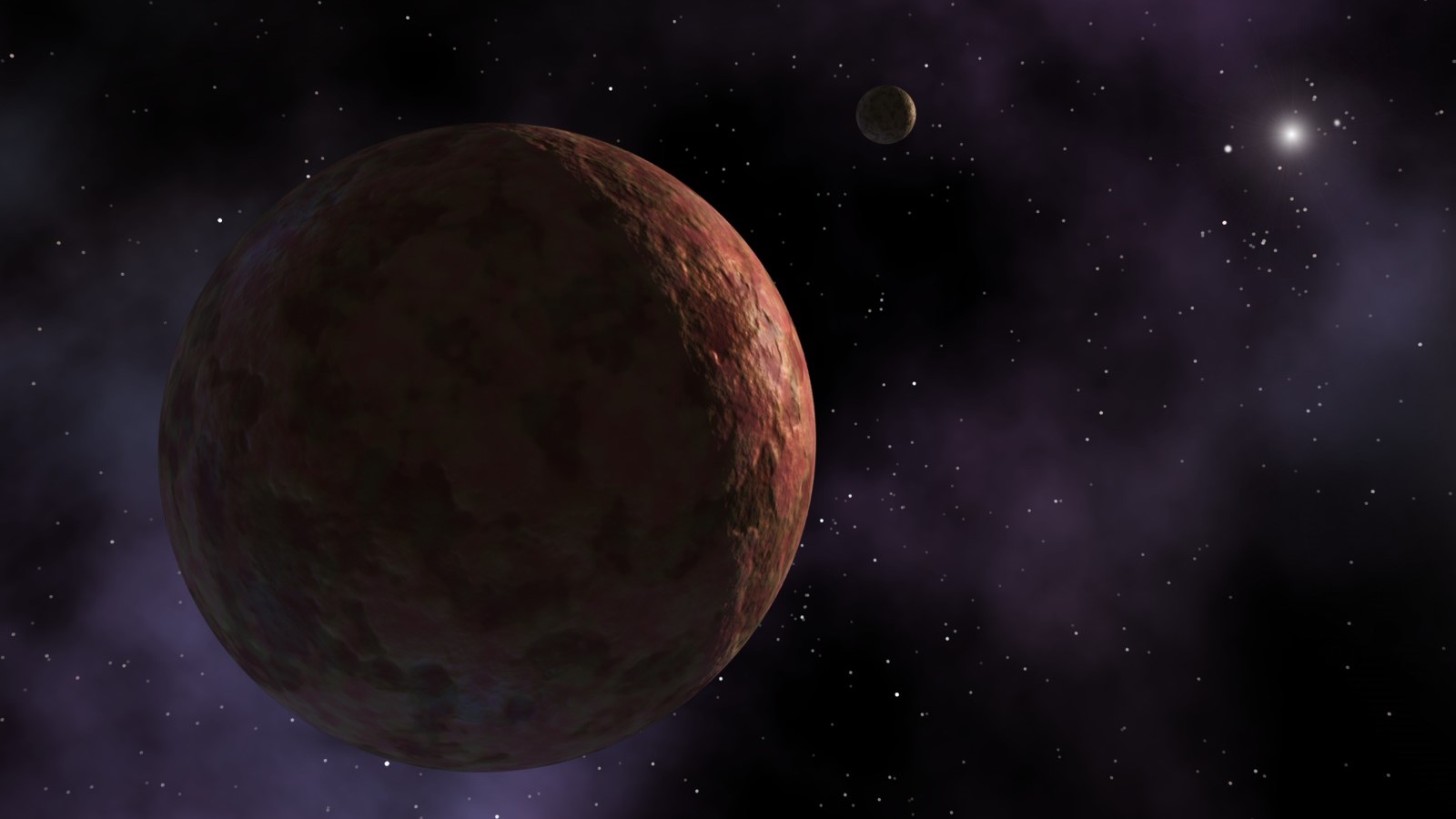Could an 'Earth-like' planet be hiding in our solar system's outer reaches?
Astronomers are racing to explain peculiar orbits of faraway objects at the edge of our solar system.

Among the many mysteries that make the furthest reaches of our solar system, well, mysterious, is the exceptionally egg-shaped path of a dwarf planet called 90377 Sedna.
Its 11,400-year orbit, one of the longest of any resident of the solar system, ushers the dwarf planet to seven billion miles (11.3 billion km) from the sun, then escorts it out of the solar system and way past the Kuiper Belt to 87 billion miles (140 billion km), and finally takes it within a loose shell of icy objects known as the Oort cloud. Since Sedna's discovery in 2003, astronomers have struggled to explain how such a world could have formed in a seemingly empty region of space, where it is too far to be influenced by giant planets of the solar system and even the Milky Way galaxy itself.
Now, a new study suggests that a thus far undetected Earth-like planet hovering in that region could be deviating orbits of Sedna and a handful of similar trans-Neptunian objects (TNOs), which are the countless icy bodies orbiting the sun at gigantic distances. Many TNOs have oddly inclined and egg-shaped orbits, possibly due to being tugged at by a hidden planet, astronomers say.
Related: Elusive Planet Nine could be surrounded by hot moons, and that's how we'd find it
Two Japanese researchers used computer simulations to analyze the effects of such an undiscovered planet on the TNOs. Those simulations, which included evolutions of numerous real and model TNOs in the furthest reaches of an icy region, known as the Kuiper Belt, produced the extreme orbits observed for Sedna and other TNOs.
Such a planet would be between 1.5 to three times Earth's size and would reside somewhere between 23 billion miles (37 billion km) to 46 billion miles (74 billion km) from the sun, astronomers say.
"It is plausible that a primordial planetary body could survive in the distant Kuiper Belt, as many such bodies existed in the early solar system," researchers write in the new study.
Breaking space news, the latest updates on rocket launches, skywatching events and more!
The quest to find hidden worlds
Searching for planets lurking in the frigid edges of our solar system is not a new concept.
The so-called Planet Nine, a world 10 times more massive than Earth, is thought to be responsible for at least five strange features in the solar system including the oddly inclined orbits of a few Kuiper Belt objects. This theoretical orb has captured the attention of many, but remains undetected. But research suggests if Planet Nine exists out there, it could be residing somewhere between 37 billion miles (59 billion km) to 74 billion miles (119 billion km) from the sun.
Although the possibility of Planet Nine gained significant traction from research groups worldwide, the theory has also been controversial. Some astronomers argue that the highly eccentric orbits of TNOs, for which Planet Nine's presence was considered necessary, could occur without the hidden planet's presence.
In 2021, an independent study in fact claimed data used by the team behind the discovery paper first theorizing Planet Nine was biased, and concluded that there's a very low chance of such a planet existing.
In comparison to Planet Nine, the newly hypothesized planet —- dubbed "Kuiper Belt Planet (KBP)" — would be much closer and more influential on the orbits of Kuiper Belt's objects, especially those beyond 4 billion miles (7 billion km), according to the new study.
It is worth reiterating that the KBP has neither been directly or indirectly spotted yet. If the KBP orbits within 34 billion miles (54 billion km), the authors say there's a 90% chance of detecting it in the sky.
However, more information about the structure of objects in the edges of Kuiper Belt is needed to either reveal or rule out KBP's presence.
This research is described in a paper published Aug. 25 in The Astronomical Journal.
Join our Space Forums to keep talking space on the latest missions, night sky and more! And if you have a news tip, correction or comment, let us know at: community@space.com.

Sharmila Kuthunur is an independent space journalist based in Bengaluru, India. Her work has also appeared in Scientific American, Science, Astronomy and Live Science, among other publications. She holds a master's degree in journalism from Northeastern University in Boston.
